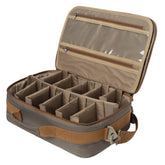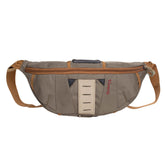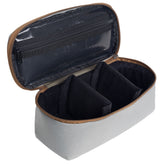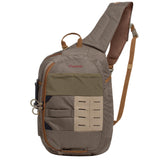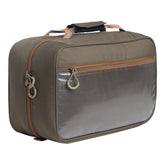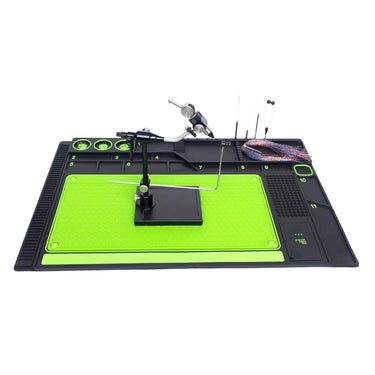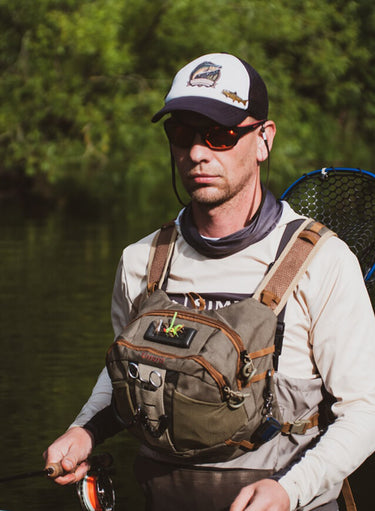Fly Vest: The Best Options for All Weather and Beginners
When it comes to fly fishing, having the right gear is essential for both comfort and efficiency. A quality fly vest enhances my fishing experience by providing easy access to tools and accessories, making each trip more enjoyable. Whether I'm a beginner just starting out or a seasoned angler, the right fly vest can make all the difference.

As I navigate through different weather conditions, choosing a fly vest with a built-in hydration system has proven to be a game-changer. Staying hydrated, especially in hot weather, is crucial for maintaining focus and energy. Conversely, in colder conditions, having a vest that accommodates additional layers without sacrificing movement is equally important.
In this blog post, I will explore the best fly vests tailored for various needs, from beginners to those targeted for specific weather conditions. By highlighting features that prioritize comfort, functionality, and ease of use, I aim to help you find the perfect fly vest for your next fishing adventure.
Fly Vest Fundamentals

When selecting a fly vest, it is essential to consider climate conditions, specific features for storage, and the importance of buoyancy and hydration systems. Each aspect contributes significantly to the effectiveness and comfort during fly fishing.
Selecting a Fly Vest for Climate Conditions
Climate plays a critical role in choosing the right fly vest. For hot weather, I prefer lightweight, breathable fabrics that wick moisture and offer venting. Vests with mesh panels can enhance airflow and keep me cool.
In contrast, for colder conditions, I look for vests that provide insulation and protect against wind. Some vests have pockets designed to accommodate hand warmers, ensuring comfort while fishing in chillier temperatures.
My choice also depends on the versatility of cargo pockets for storing essential items, like flies, leaders, and tippets, making them easily accessible regardless of weather.
Fly Vest Features for Optimal Storage
Storage capacity is vital when selecting a fly vest. I focus on vests that feature multiple cargo pockets to hold essential gear securely. Pockets should be of varying sizes; larger ones for nets and smaller ones for flies, tippets, and leaders.
I appreciate vests with magnetic or zipper closures for quick access to frequently used items. A well-organized vest allows me to spend more time fishing and less time rummaging through pockets.
Additionally, tool attachment points for nippers, forceps, and indicators can streamline my workflow on the water. Proper storage ensures I have everything I need within reach while maximizing comfort.
Understanding Buoyancy and Hydration Systems
Buoyancy is another important aspect of fly vests. A vest that offers buoyant materials can assist if I accidentally find myself in the water. This safety feature is critical, especially during extended fishing trips.
Moreover, I value vests equipped with built-in hydration systems, allowing convenient access to water without disrupting my fishing activity. Hydration packs integrated into vests can keep me refreshed while maintaining essential gear placement.
Choosing a vest with buoyancy and hydration systems allows for a more enjoyable and prepared fishing experience, enhancing both safety and convenience in the field.
Fly Vests for Diverse Angler Needs
When choosing a fly vest, it’s essential to consider specific needs based on experience, weather conditions, and fishing style. I will cover aspects that help both new and seasoned fly anglers select the right vest for their fishing adventures.
The Best Fly Vest for Beginners
For beginners, I recommend a vest that combines ease of use with essential features. Look for lightweight options with adjustable straps to ensure a comfortable fit.
Key features to consider:
- Multiple pockets: These allow for easy organization of flies, tippets, and tools.
- Built-in hydration systems: Staying hydrated is crucial, especially for long days on the water.
- Affordable price: It’s wise to start with a reasonably priced vest to ensure it meets your needs without a huge investment.
My top picks often include beginner-friendly brands known for durability and practicality.
Enhancing Fishing Efficiency in Hot Weather
When fishing in hot weather, a breathable vest is invaluable. Vests designed with mesh panels offer airflow, making them comfortable.
Consider these features:
- Lightweight materials: They help prevent overheating and exhaustion during long fishing sessions.
- Hydration system: Having water readily available is a must to avoid dehydration.
- Sun protection: Look for vests made from UV-blocking fabrics to shield my skin from harsh sun exposure.
I prefer vests with quick-dry materials, as they allow for easier cleaning and comfort after accidental water splashes.
Ensuring Warmth and Comfort in Cold Weather
In colder conditions, my focus shifts to insulation and layering options. A good cold-weather fly vest should provide warmth while maintaining functionality.
Here are essential features:
- Insulated pockets: These keep hands warm and can hold gear safely.
- Layering compatibility: A vest that accommodates extra layers beneath ensures I stay comfortable.
- Water-resistant fabric: Protects against rain or unexpected splashes from wading.
I often select vests that have a higher collar or additional storage for hand warmers, ensuring I remain prepared for varying weather conditions while fishing.
Brand and Gear Recommendations
Choosing the right fly vest can greatly enhance your fishing experience. I will highlight a reputable vest option and some essential tools and accessories that every angler should consider.
The Simms Freestone Vest Review
The Simms Freestone Vest stands out for its functionality and durability. It features multiple pockets that provide ample storage for fly boxes, tools, and personal items. The adjustable straps ensure a comfortable fit, making it suitable for long hours on the water.
This vest includes a couple of D-ring attachments for net storage and features a hydration system compatibility, allowing for easy access to water. It’s particularly beneficial when targeting species like smallmouth bass, as staying hydrated is crucial during those hot days. The material is lightweight and breathable, which is essential when wading through streams.
Essential Tools and Accessories
Equipping my vest with the right tools is vital for efficiency. Here are key items I recommend:
- Pliers: A reliable pair of pliers is essential for safely handling hooks and lines. Look for ones with a built-in cutter.
- Tippet Spool: Having a compact tippet spool will allow me to easily access additional tippet material whenever needed.
- Fly Box: A waterproof fly box keeps my flies organized and protected from moisture.
- Forceps: Useful for handling fish and removing hooks with minimal harm.
Having these essentials at hand streamlines my time on the water.



